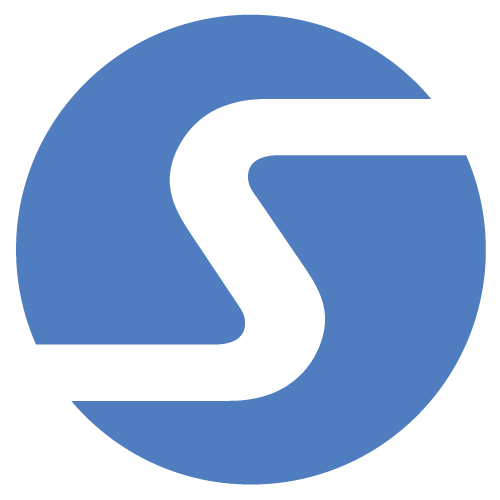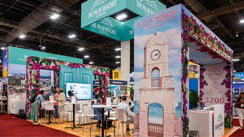SEO for Face-to-Face Marketers
Search Engine Optimization (SEO) is one of those phrases that conjures images of metacode, Google algorithms and other technical terms that seem light years away from face-to-face trade show marketing.
But nothing could be further from the truth. The web is intended to be a next-best replacement for in-person interaction and SEO is simply the procedure by which we align our messaging with our audience’s needs. SEO not only ensures that users can find us when they need us, but it ensures that the materials we provide them directly addresses their questions at the moment they conduct their online search.
As such, SEO directly parallels what every successful exhibitor does on the trade show floor. Trade shows are full of attendees searching for answers. Providing a booth experience that lures in traffic, elicits engagement and answers questions will result in an exhibit that has been effectively “search-optimized” for in-person visitors.
UNDERSTANDING AUDIENCE INTENT: “GO, KNOW or DO”
Every search that people do on the web falls into one of three categories: navigational, informational and transactional. A person who searches for your company name online is conducting a navigational query: their intent is to go directly to your website. A person who searches for “companies that make [product x]” is conducting an informational query: they may not necessarily want to visit your website, nor do business with you, but they are merely looking to know more about you. A person who searches for “price of [your product or service here]” is conducting a transactional query, meaning they are interested in doing something with your company (i.e., buying from your e-commerce store, requesting a quote, or contacting you).
Understanding the three different types of user intent is critical for choosing keywords for SEO and online advertising. But the intent of every trade show attendee also falls into one of these three categories. Online or in-person, your virtual or physical exhibit needs to cater to each of these audiences.
THE “GO” AUDIENCE
This should be intuitive, but if you don’t exhibit at key conferences, if you don’t make your booth stand out among the competition and if you don’t communicate your exhibit plans to your customers or prospects, it’s the real-world equivalent of not having a website. Or, at least, it’s like having a poorly-optimized website. Your lack of visibility will hurt you among that core group of trade show attendees who use these events as vital meet-and-greets, regardless of where they are in their buying cycle. Furthermore, your competitor’s enhanced visibility at these events will only enhance their brand awareness at your expense. So, when you’re dealing with an audience that’s ready to visit with you or your competitors, make sure they can find you at the show. Exhibit at your industry’s core conferences, invest in an eye-catching booth design and make sure your signage clearly communicates your value proposition to attendees who are looking for businesses like yours.
THE “KNOW” AUDIENCE
This is a tough pill for many marketers to swallow, but the vast majority of website visitors and trade show attendees are looking only for free information. They are not yet in “buying” mode.
The first big mistake marketers make with this audience is not clearly providing the sought-out information. The second mistake is providing the information, but allowing visitors to walk away with it without capturing their contact information, segmenting them by interest and then nurturing them after the event.
On the web, information seekers are best served by search-optimized blog content or how-to articles — content which in turn entices users to sign-up for a related, value-added downloadable document or webinar. This content lures the visitor in and the gated content gets them to convert into a qualified lead.
At trade shows, booth features such as product demos, kiosks and other interactive elements encourage visitors to enter your booth and engage with you. Once the step inside, you can use your badge scanner or smartphone app to capture attendee names and interests for later follow-up.
In both situations, the key is to make sure your follow-ups are specifically catered to the information that the visitor was initially seeking. Whether you do follow-up sales calls, email marketing or both, you need to specifically address the topics that were of initial interest to your website or booth visitors, then guide them into making a purchase or requesting a sales call. You can’t just “spam” them with sales offers when they aren’t in “buying mode.”
THE “DO” AUDIENCE
These audiences are the nuggets of gold we are all searching for: visitors who know exactly what they want and are ready to buy. Getting them to engage with you online means having quality, clearly-described products and services and a clear call-to-action, along with an e-commerce platform or responsive sales team ready to handle the conversion.
On the show floor, closing more of these sales may mean offering a free trial that can be tested onsite by attendees, providing them with an online ordering solution right in the booth, or having a dedicated space available where contracts can be reviewed and signed. The goal in each situation is to make the final steps of ordering as easy as possible and closing the sale on the trade show floor, rather than relying on follow-up calls after the event (because waiting can jeopardize the sale).
Optimizing your website and optimizing your trade show booth all come down to understanding the core psychology of your intended audience. It’s only when you are providing optimized features to all three types of visitors that your website and your trade show presence will both high visibility and high sales activity.





